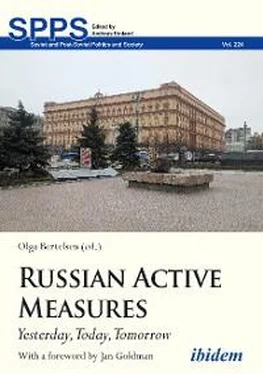As a response, on 16 February 1971, KGB officials submitted another, more detailed, report to party leaders with a description of active measures to curtail this movement. 35The KGB intended to conduct these operations in the cities where this movement originated—in Kyiv, Kharkiv, Lviv, Dnipropetrovsk, Odesa, Donetsk, Voroshylovhrad, Zaporizhzhia, Simferopol, Rivne, Poltava, Kirovohrad, Sumy, and Chernivtsy. The members of hippie groups were divided into two social groups: 1) fartsovshchiks (black marketers) and 2) bitlomans , the fans of “beat-music” (Anglo-American rock-n-roll). 36The KGB’s main concern, however, laid in the sphere of ideology: “While the hippies in the West protest against bourgeois society’s rules, their emulators in our country advocate the revision of moral and ethical norms of the socialist way of life, striving to create their own moral norms.” 37Despite the fact that the majority of the movement’s members were college students (including college dropouts), the leaders were more mature individuals, who explained the emergence of hippies in the USSR by political motives. According to the KGB, they positioned themselves as the articulators of oppositionist ideas and formulators of a program of activities. To illustrate the political danger of these people, KGB operatives quoted “one of the authorities” among the Kharkiv hippies, A. L. Kleshcheiev who explained to the KGB officer:
… We advocate democracy, the free choice of moral norms ( svoboda nravov ), free speech, freedom of creativity, freedom to propagandize our own ideas, freedom to demonstrate, free love, and behavior unlimited by moral constraint. A society should not interfere in the [development of] personality: if I do not impose on other people, I do what I want to do—I can sit or lie down where I want; if there is the possibility to live without working—I avoid working, because our needs are minimal; I want to be dressed in what I’d like or go naked; I want to spend the night where I’d like, and travel where I like. Because these [options] are unavailable to us, my friends and I believe that our [Soviet] authorities do wrong things […] we have no full freedom and democracy; and people who have power to change [this situation] are narrow-minded and do not understand our demands. We conclude that at this stage, under this political system [in the USSR], it is unlikely that we can achieve our goals […] the West seems to us more progressive and democratic than our [political] regime … 38
In their reports to Ukraine’s party boss Petro Shelest, KGB officials suggested that the hippies’ behavior in public was unacceptable. Drinking, gambling, drug abuse, black market transactions ( fartsovka ), and sexual perversions became habitual for the hippies. Their gatherings at restaurants, cafes, and city parks began to attract public attention because of their obscene language, improper appearance, and offensive behavior. The KGB also informed Shelest that these individuals attempted to avoid the military draft and any type of socially useful work, lived the lives of vagabonds, and engaged in seditious conversations. According to KGB analysts, this behavior was shaped by the ideologically harmful influence of foreign radio broadcasting that the hippies systematically listened to. 39The major KGB concern was to prevent the hippies from organizing and establishing an intercity communication network. There was information about such attempts when in 1969 the representatives of various hippie groups in Kyiv, Odesa, Kharkiv, and Voroshylovhrad tried to organize the first republican, and then all-Union, congresses that would help unite all hippies in one centralized organization. The objective of this organization would be sharing literature and art to popularize the ideas and the philosophy of hippies. The KGB operatives infiltrated the most active groups, undermining their efforts from inside. 40
As a result of these “prophylactic measures” against hippies in 1970, KGB officers were able to offer their bosses a general picture of hippie groups and their origin. Twenty members of two hippie groups in Kharkiv served as the model for their investigations. The KGB learned that their initial impulse for gathering together came from their passion for western (rock) music. In 1968, two students, A. Soloviev and A. Makarenko, and one dropout, Yu. Shatunovskii, from the Kharkiv State University, created an “amateur club of fans” of rock music that in 1968 and 1969 organized numerous so-called “psycho-concerts” in their private apartments and in the basements and stairways of public places. According to KGB reports, the ideologically dangerous events included music by foreign music stars, including “songs of obscene content, questionable in a political and artistic sense.” The KGB emphasized that these individuals planned to unite up to 2000 people, and they even wrote a program that stipulated the rights and duties of its members. The conspiratorial club “Society of Fighters for the Flaming Heart of Danko” (Klub bortsov plamennykh serdets Danko) was named after Danko, a character from Maxim Gorky’s Old Izergil , who sacrificed himself, saving his people with his flaming heart. The club members adopted a song performed by the the British rock band “The Animals” as its anthem. 41
In October of 1969, Makarenko and Shatunovskii made an attempt to organize a demonstration of their followers at the Dzerzhynskyi Square in downtown Kharkiv. They planned to publicly demand the official recognition of their hippie organization by local authorities. The KGB conducted a special operation to curtail these activities, arresting ten Kharkiv hippie activists. Similarly, in April of 1970 in Voroshylovhrad, nine participants of a local hippie group were arrested for using drugs in public. The same month, the KGB reported that a hippie group from Zaporizhzhia organized a march in the city, attempting to popularize their ideas. Also Lviv had their own share of hippies: in December of 1970, 22 local hippies composed a statute ( ustav ) of the hippie club, planning a similar action. In April of 1971, 30 hippies from Ivano-Frankivsk organized a rock concert at the city’s central square. The evening of 18 June 1971 in Chernivtsi became memorable for the arrest of 17 hippies by KGB operatives. To celebrate Paul McCartney’s birthday, the hippies had marched in the streets, carrying hand-made banners with his portrait, completely paralyzing Chernivtsi’s downtown. Numerous arrests by the KGB eventually ceased these public actions, but not the movement itself. 42It kept growing, especially in the capital city of Kyiv.
By late 1969, the KGB discovered more than 170 hippies in Kyiv and uncovered their “president.” S. Baiev, a dropout from the Kyiv Pedagogical Institute, tried to unite and consolidate the movement in Kyiv. Baiev’s behavior was rather provocative. He maintained contacts with foreign tourists and journalists, especially with Americans, and publicly criticized the Soviet system. He and his followers condemned the invasion of Czechoslovakia by the Soviet troops, expressing their desire to escape abroad. 43Despite KGB active and prophylactic measures (arrests, expulsions from the Komsomol and colleges, interrogations of the participants and their parents), the hippie groups in Kyiv survived. In 1974, another hippie leader and a student of the Department of Biology at the Kyiv State University, Oleh Pokalchuk, reenergized the movement, accentuating the religious (spiritual) dimension in the life of Ukrainian hippies. Pokalchuk conceptualized a “Buddhist commune” as a new hippie model for his followers. During 1974–1975, the KGB documented active interactions of Ukrainian hippies with Orthodox Christian and Baptist communities, and the growing Krishnaite movement in Soviet Ukraine. These links helped them eventually connect with their foreign co-religionists. 44
Читать дальше












